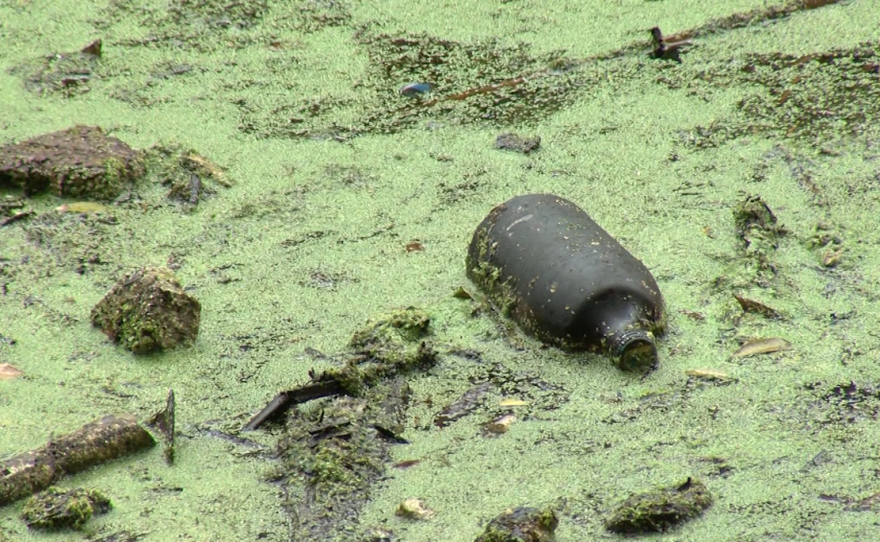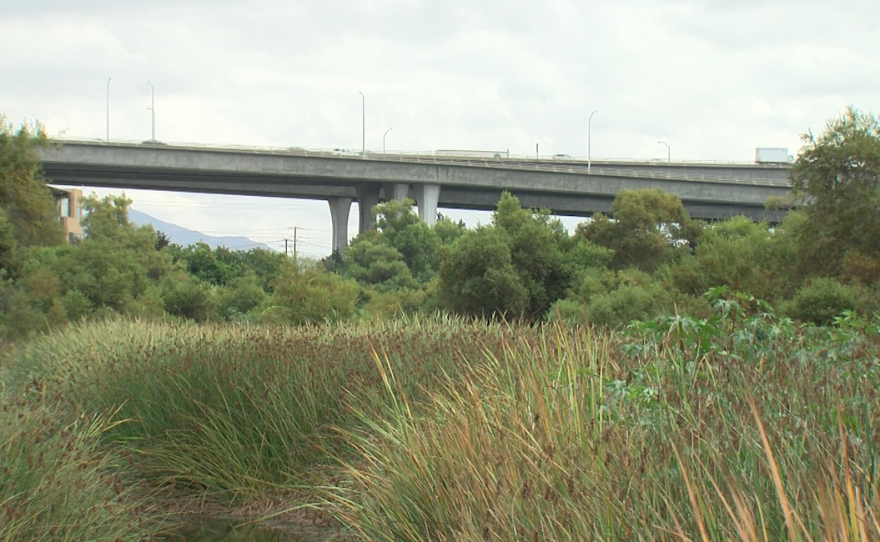Volunteer Paul Bareno's yellow shirt makes him easy to see as he helps clean up a stretch of San Diego riverbed.
"We were here, I'm guessing, we were here about two months ago, maybe less. And we got it pretty clean. Yeah we hit the same amount of places regularly," Bareno said.
There is plenty to clean up. There are clothes, food wrappers and at one campsite, long strips of yellow plastic tubing that's supposed to be a temporary sandbag. None of it is surprising.
"I think just the amount of trash you can find in one place, but that seems to happen pretty often," Bareno said.
The San Diego River is more crowded these days since the city began moving people who are homeless off of downtown streets. The extra people put additional pressure on an already stressed ecosystem.
The trees and overgrown plants hide the people, campsites and trash.
"Yeah, you and John can start on that site back there," said Tiffany Swiderski, the crew's team leader. "And then also up on the hillside, there's some stuff over there," said Swiderski, who works for the San Diego River Park Foundation. She has walked through this tangle of brush, trees and overgrown paths many times and she takes the time to talk to the people who seek shelter here.
"It is easy to just go to a bad place, with all these negative emotions, but when you meet people and talk to them about their situation, it helps to humanize things," Swiderski said.
Some of the clandestine campsites are hidden deep inside the brush. Others are just a step away from a busy street. Close to all the camps are makeshift bathrooms. One is near a tree, just 20 feet from the spot where a tent was pitched a day or so ago.
"You can see here that this is all used toilet paper. You can see human feces, there's some right here, not even with the protection of the log right there," Swiderski said. "But yeah, there are multiple sites like this, around this property alone, where each encampment kind of has its own bathroom area that the people that had been living here kind of designated that as their restroom."
It is dry here now, but when winter rains come, the river's sandy bed will fill up with water.

In some spots, paths that are dry now will be under 10 feet of water and that water will carry everything downstream.
"People camping on streets, in storm drains, literally living in forest or creek, underground in the storm drain. Their wastes are going somewhere and it's not going to a toilet. It's going into the river," said Dave Gibson, director of the San Diego Regional Water Quality Control Board.
Local cities and the county share responsibility for making sure the water quality along the river meets federal standards. But pollution permits don't require frequent water quality testing.
"This is a human problem and humans can solve this problem," Gibson said.
The San Diego County Department of Environmental Health does regularly test water quality at the mouth of the river, near Ocean Beach. But testing upriver is much less frequent.
San Diego County officials did not want to answer questions about water testing in the San Diego River, in person, but they did answer some questions by email.
The county conceded there is only limited testing in the watershed.
The email said, "It appears that all coastal watersheds experience inputs of human waste, so this issue is not unique to San Diego River."
Cities are required to track stormwater drains to check for possible sewage pipe leaks and the county and other communities have done testing for specific studies.
But the river is ephemeral. Sometimes there's no water to test. Or the water that does exist is in stranded stagnant pools.
The Water Quality Board's Dave Gibson said the situation becomes more complicated when a lot of people are living in the overgrown riverbank.
“Because there's simply not adequate access to sanitation because the kinds of sanitation issues that existed on the streets, which led to hepatitis outbreaks exist in triplicate in the river bottom itself. What's more is they now provide a vehicle for those wastes to end up downstream on beaches and on properties they otherwise wouldn't have been," Gibson said.
The regional water agency is considering issuing clean-up and abatement orders for locations where they know homeless camps exist.
And while the county has announced plans to do more extensive testing along the river, the water agency said waiting three years for useful data doesn't make sense.
Gibson is considering issuing an executive investigative order for the watershed that will push for answers sooner.







